Sheet Metal Fabrication
Sheet metal fabrication is a manufacturing process that produces thin broad sheets of metal to be formed, cut and finished into a final sheet metal product or part. Common fabrication processes include: stretching, drawing, bending, flanging, punching, shearing and spinning.
Quick links to Sheet Metal Fabrication Information
The History of Sheet Metal Fabrication
- Early History of Sheet Metal Fabrication
- Metal fabrication is a practice that goes back beyond memory. We believe that metalworking started after the discovery of copper. The oldest piece of worked metal we have ever found is a pendant. It was found in modern-day northern Iraq, and it was made around 8700 BC. Other early metalworkers were the prehistoric peoples of the Great Lakes Region. Between around 5000 BC and 4000 BC, they were already using heat and handheld hammers to form items from copper.
- As the people of the world discovered new metals, like gold and iron, their metalworking techniques slowly became more advanced. Some of the most skilled metalworkers of the ancient world were the Egyptians, who created products from necklaces to weapons.
- It was during those years and the time of antiquity that people learned skills like engraving, cutting, stamping and bending. Today, we still use those methods, only we do so much more efficiently and with more precision.
- Sheet Metal Fabrication Beyond the 1400s
- In 1485, Leonardo da Vinci drew the very first sketch of a rolling mill. Shortly thereafter, people began to attempt to build these rolling mills. As far as we know, the first two went up in 1501. The workers in one reused metal sheets, turning them into strips. Meanwhile, workers in the other fabricated gold metal sheets, so that they could make coins. These very early rolling mills, though, were not nearly as advanced as the ones da Vinci envisioned. A rolling mill like his wouldn’t go up until about 100 years after he sketched it, in 1590. This mill used two cylinders to flatten metal in between them.
- In the 1600s, we saw glimpses of the world of sheet metal fabrication to come. First, in 1615, manufacturers put up the first lead and tin plate factory. Then, in 1682, English manufacturers built their first cold roll mill.
- The Industrial Revolution began in around 1760, and with it came mass sheet metal fabrication. It was during the Industrial Revolution that important inventions, such as press brakes and the assembly line, widening sheet metal fabrication capabilities more than ever. Just ten years after the Industrial Revolution began, in 1770, Joseph Bramah invented the hydraulic press, another tool used in precision sheet metal fabrication.
- By the turn of the 19th century, scientists had discovered aluminum. Within 50 years, Henry Bessemer, an Englishman, took out a patent on the first viable method for converting iron into steel. Steel and stainless steel have proven to be two of the most important and widely fabricated metals of all time. The development of new materials for sheet metal fabrication continues on today, as scientists continued to create new alloys.
- Modern Sheet Metal Fabrication
- Today, sheet metal fabrication is more advanced than ever. In part, this is thanks to CNC (computer numerical control) technology and CAD (computer-aided design) software. Also, though, the tools involved in sheet metal fabrication have also improved; saw blades are sharper, drills are faster and press brakes are stronger. Better tools provide better results because the operator is able to perform repeatable precision actions. A stronger press brake, for example, can bend the sheet metal into shape faster and with more force which decreases the stress from stretching. Less stress and stretching allow the metal to retain a uniform thickness without weak areas that would wear out faster.
Whether done by hand or by a computer operated machine, sheet metal fabrication has many benefits. First, it is a precise operation. Second, it reduces both the cost of materials and labor. Third, using it, manufacturers can create high quality parts or products that will perform well for a long time. Finally, sheet metal fabrication is diverse not only in its possibilities, but its cost points.
The two most common materials fabricated sheet metals include aluminum sheet metal and stainless steel sheet metal. Others include: copper, titanium, mild steel, structural steel, brass and bronze.
Aluminum is one of the most common sheet metal materials because of its lightweight, tensile and compressive strength.
Stainless steel sheet metal is one of the most important components to the manufacturing industry because the metal offers good corrosion resistance, strength and durability. Stainless steel is also easy to clean. So, stainless steel with customers using it in harsh environments or around food.
- Sheet Metal Fabricating
- Sheet metal fabrication services start with sheet metal fabricating. Sheet metal suppliers are the first step in the transformation from raw material to finished part or product. They begin by melting the metal into long, malleable slabs. Then, they feed said slabs into large powerful rollers, which compress them. The compression results in large broad planes of metal.
- Sheet Metal Shipping
- Sheet metal suppliers then usually cut the sheet metal to size, and ship it or transport it to the next factory. The next plant takes on its design and fabrication as a product.
- Sheet Metal Design
- At this stage, sheet metal fabricators make a comprehensive product design plan that includes the smallest details. They then use the design to manufacture the actual part.
- Part Forming
- During sheet metal forming, manufacturers draw, cut, punch or stretch, weld, perforate, spin, roll, stamp, bend, iron, shear, saw, drill, blank, deburr, sand and otherwise form and work sheet metal into the final product.
- Heat Treating
- Most metal working processes require heating the metal. Heating processes are used to harden or soften sheet metal by heating or cooling it until it reaches the desired level of hardness. Several important techniques may be used in the heat treating process, including annealing, quenching and tempering.
- Optional Assembly
- If the product has multiple pieces, manufacturers will assemble it before sending it to customers or distributors.
During design, sheet metal fabricators think about important considerations beyond the usual specifications of dimensions, material and general shape. These include specifications and factors such as: part size, required strength, number of parts needed and additional materials. They must think about, for example, how to ensure that the final custom product will be effective and safe by anticipating any potential problems, weak areas or stress points in the finished metal part. They must also take into consideration industry standards and industry requirements. To save customers money and/or to promote sustainability, manufacturers may also work with previously manufactured sheet metal. Find out more by talking to your supplier.
Machinery Used in Fabrication
To complete sheet metal fabrication, manufacturers use a variety of machinery, including: punch and die system, press brakes, tools like drills, automated lines, CNC machining and more.
Punch and die systems work when manufacturers place thin flat sheets of metal on a surface, hold it down and deform it using a descending punch. These systems often team up with press brakes or other specialized machine presses; in this case, the manufacturers place the sheet metal on top of them. Press brakes are used in general to bend sheet metal. Manufacturers can not also use them in conjunction with punches, but also dies of all shapes and sizes.
Drills used by fabricators today are typically laser-powered. With laser power, drills can perform both regular drilling, as well as cutting. Laser cutting and drilling allows manufacturers to cut through metal at precise depths and angles. Also, laser cutting leaves very clean edges.
Automated lines that use robotics are quite common in large plants. There, the robotics move and turn sheet metal workpieces as they are formed, cut and finished.
CNC machinery (and CNC technology in general) are able to produce very accurate parts through use of software.
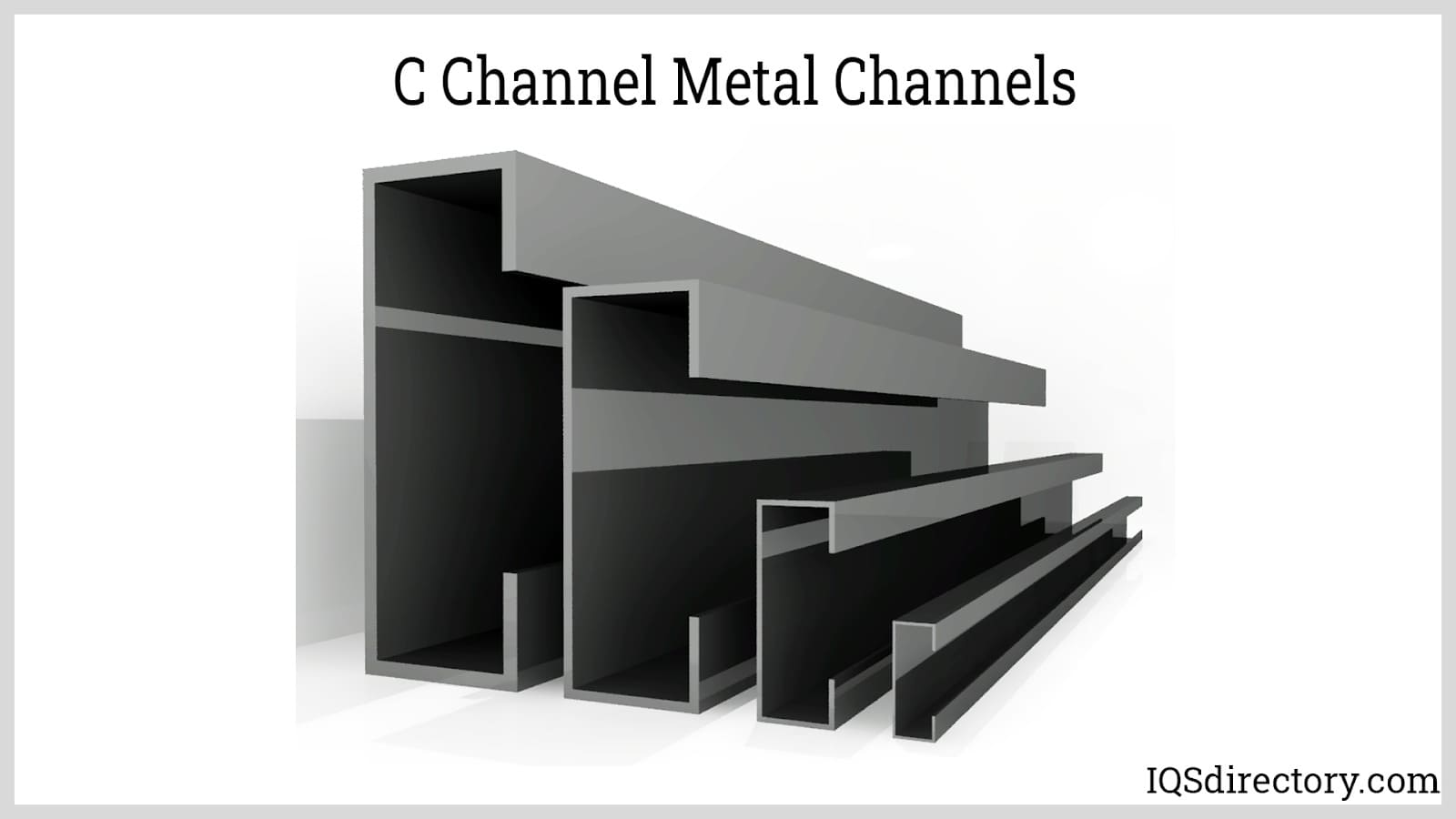 Sheet metal fabrication, a process that is used to shape and form thin metal sheets by cutting, bending, punching, and welding into various shapes.
Sheet metal fabrication, a process that is used to shape and form thin metal sheets by cutting, bending, punching, and welding into various shapes.
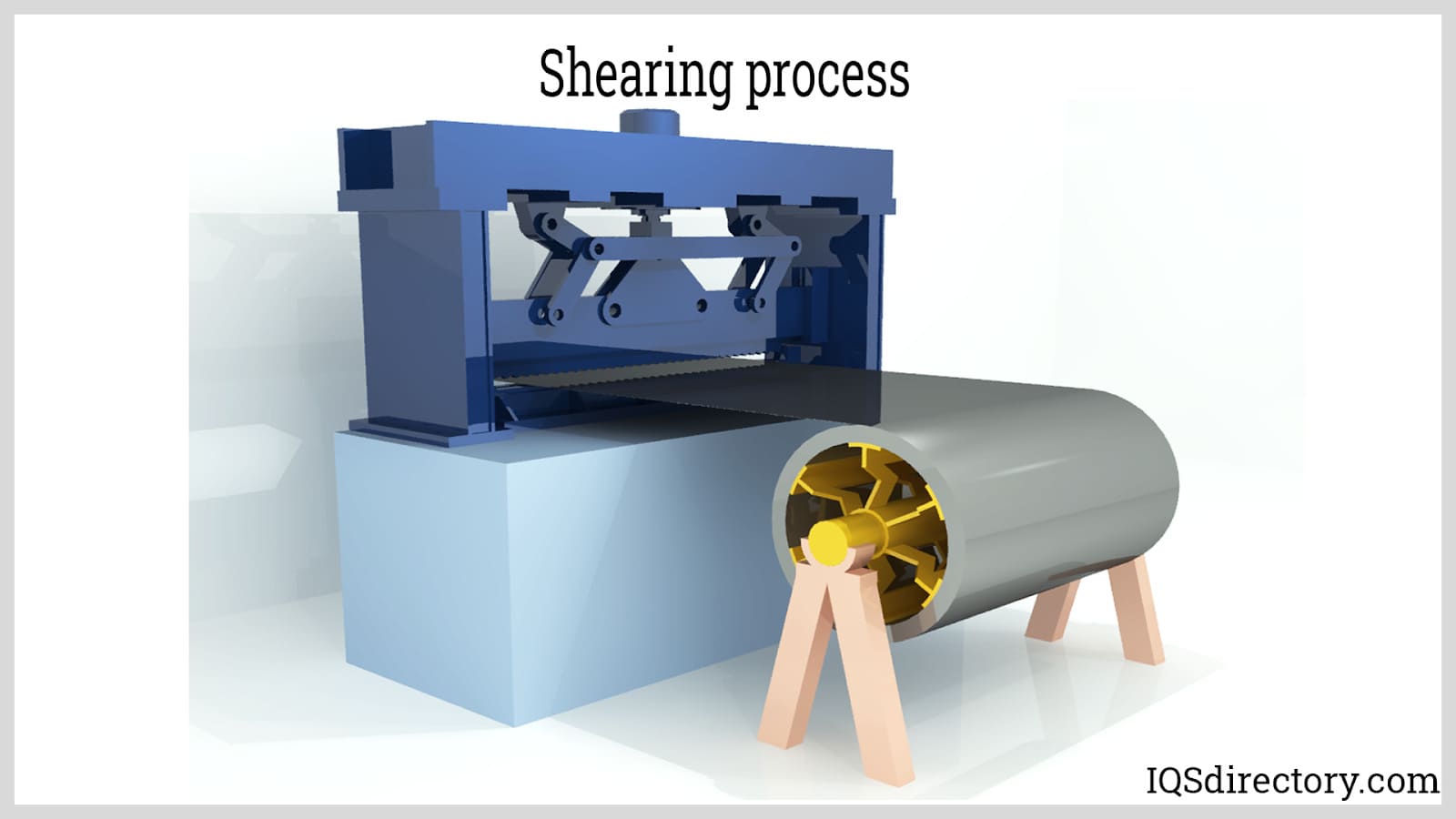 Shear cutting uses upper and lower blades to cut in straight lines.
Shear cutting uses upper and lower blades to cut in straight lines.
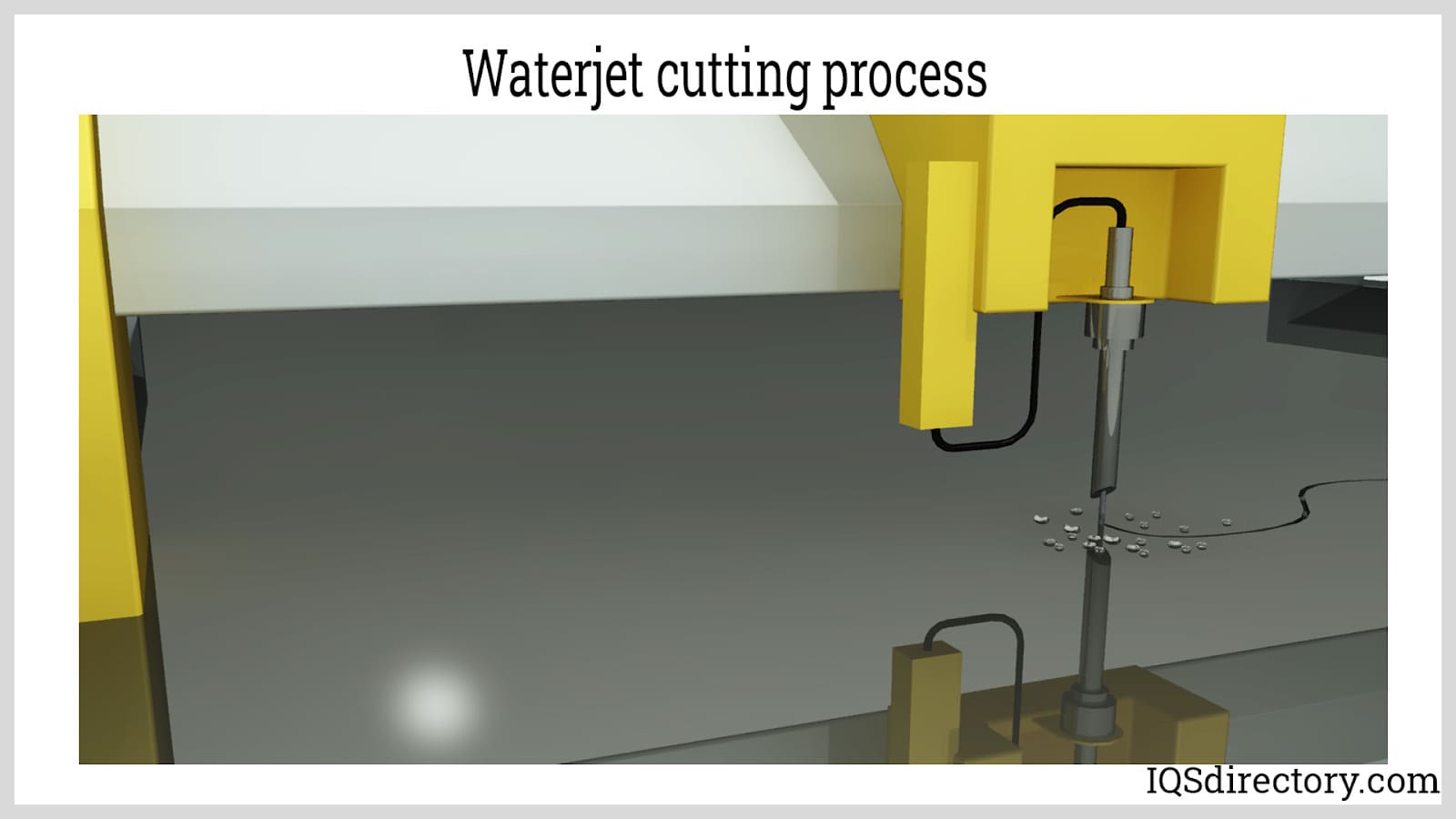 A high-pressure water jet shot at high speed to cut sheet metal and is mixed with an abrasive substance to facilitate eroding of the material.
A high-pressure water jet shot at high speed to cut sheet metal and is mixed with an abrasive substance to facilitate eroding of the material.
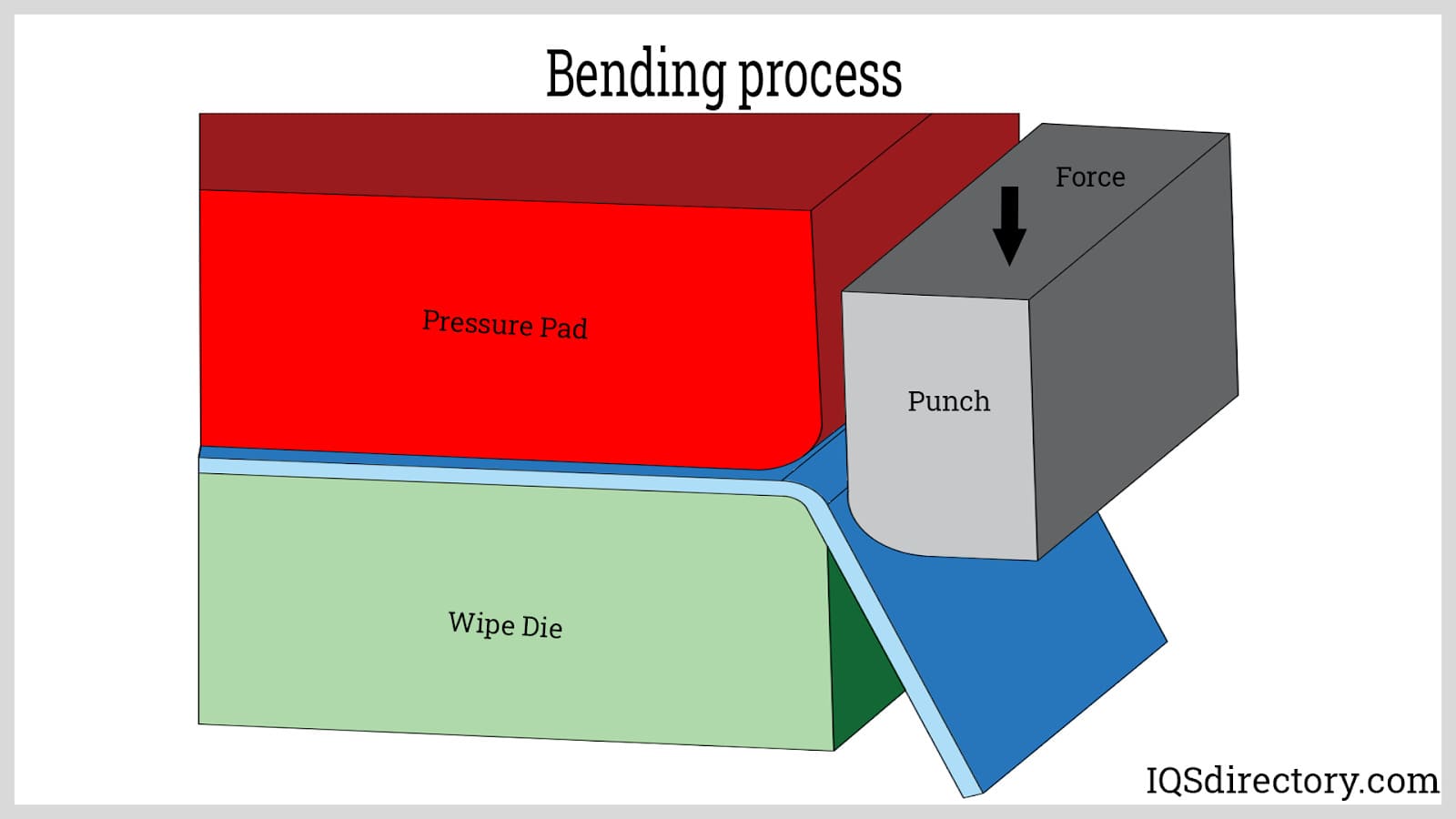 Machines such as press brakes to bend sheet metal into angles from 0 to 120 degrees.
Machines such as press brakes to bend sheet metal into angles from 0 to 120 degrees.
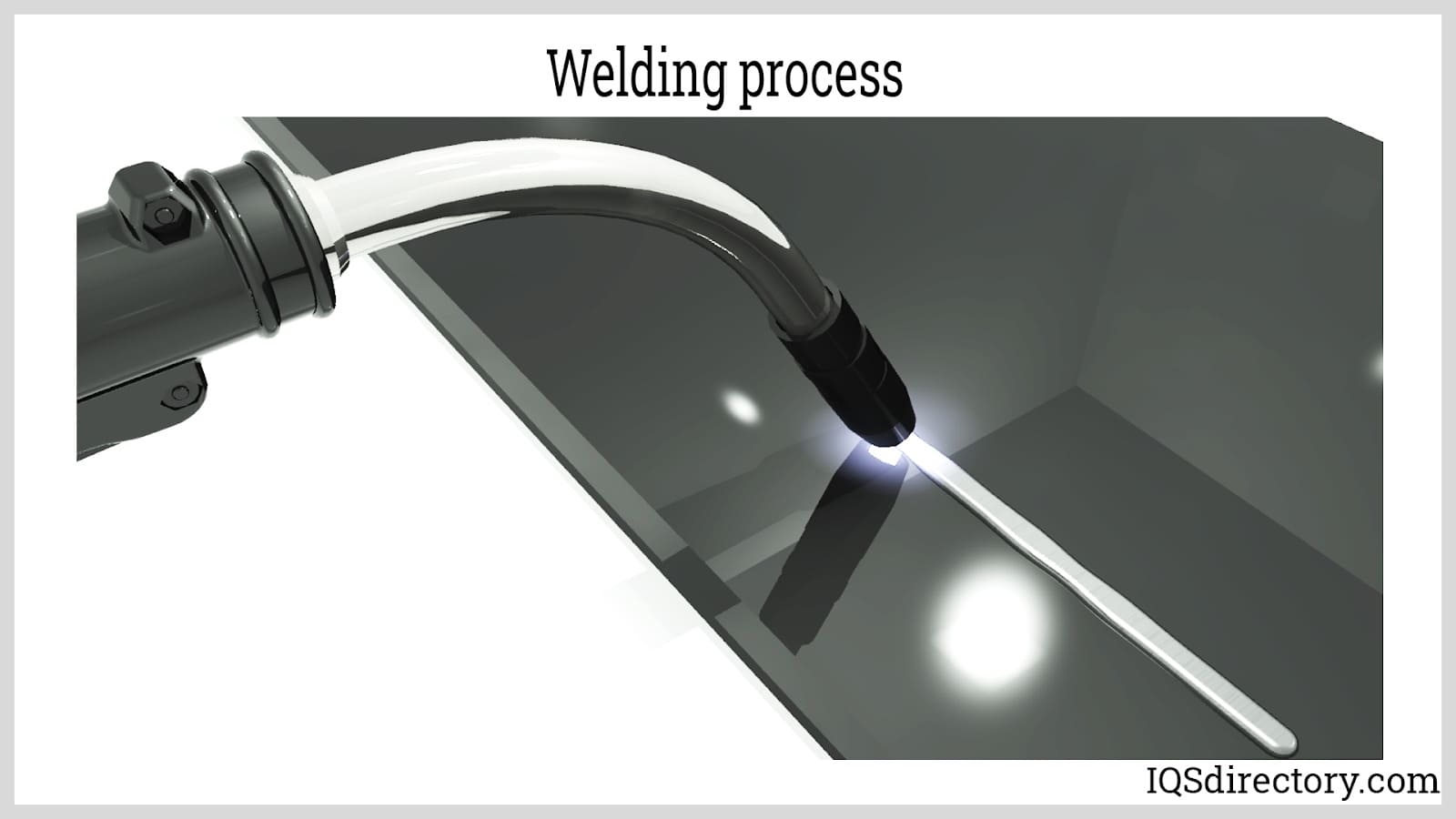 Welding joins two of pieces of metal together by melting the metal to create a joint.
Welding joins two of pieces of metal together by melting the metal to create a joint.
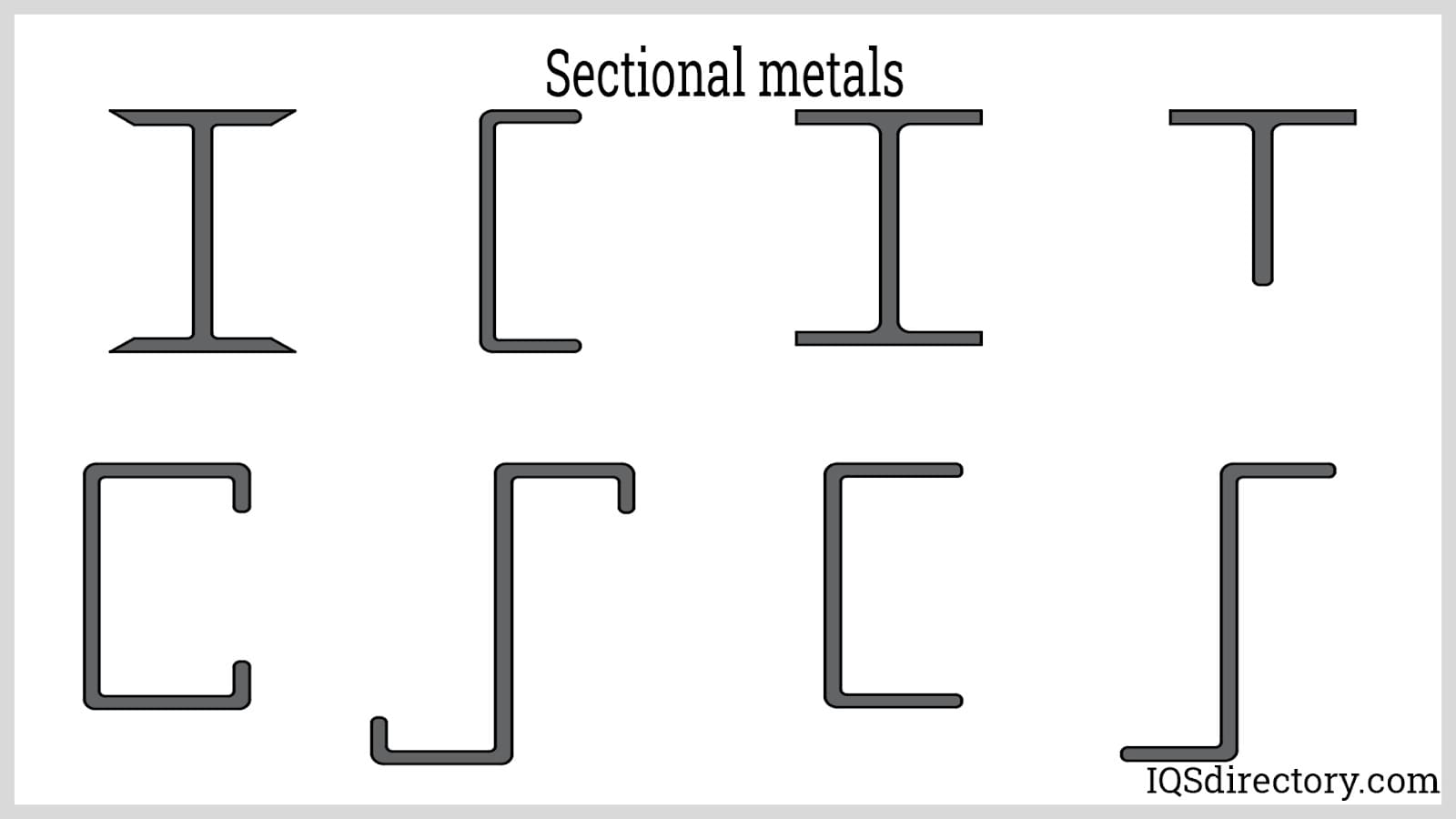 The different types of shapes that are created during the fabrication process.
The different types of shapes that are created during the fabrication process.
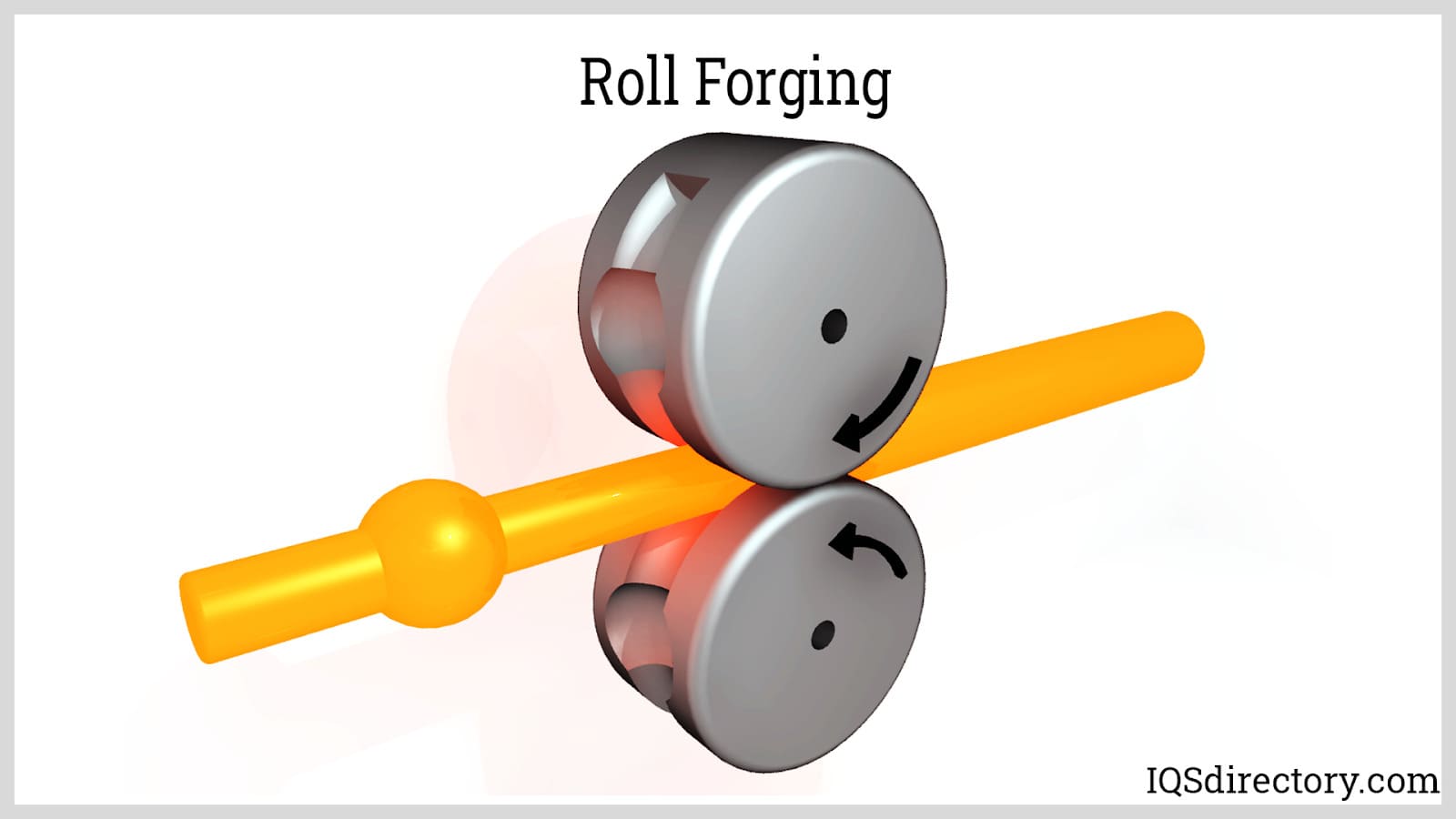 Rolling machines are useful in forming steel into rolls, there by creating a more finished product.
Rolling machines are useful in forming steel into rolls, there by creating a more finished product.
Practically every aspect of modern life, whether residential, commercial or industrial, benefits from precision sheet metal fabrication. Sheet metal fabrication is a staple for many industries including the: military, food processing and storage, communication, automotive, computer, medical, electronics, aerospace, pharmaceutical and construction industries.
Using precision sheet metal fabrication, manufacturers can create countless products for their customers. Examples of such products include: HVAC components (grating, ductwork, etc.), stairwell railings, structural supports (airplane frames, steel bridge skeletons, etc.), bent metal fluorescent lighting hoods, cutlery, scissors, fences, cages, shelving and fabricated metal furniture like metal cabinets, which are used as storage units.
If you’re in the market for custom sheet metal fabricated parts or products, you need to partner with a company that understands your needs, with the capabilities to execute your vision. Find a company like that by checking out those we have listed above. You may browse the profiles we’ve created for these precision sheet metal fabrication suppliers, or you may go directly to the website of an individual company. Either way, your goal is to get a feel for the services and capabilities of every company we’ve listed, so that you can make an informed decision. Remember that, regardless of your industry, the right company will listen to your concerns, take into account your requirements, and create custom products within your budget.
Variations and Similar Services for Fabrication
- Annealing
- A heating and cooling process used to soften metal. Annealing processes change the physical and mechanical characteristics of metal in order to create a specific microstructure.
- Cutting
- Can be performed using drills, lasers, blades or saws. Manufacturers employ cutting when they wish to remove imperfections or excess material from a product.
- Cold Forming Process
- Involve all those that occur at room temperature, such as bending, cold rolling and drawing. Cold forming processes are generally done to increase the strength and hardness of the metal.
- Sheet Metal Bending
- A manufacturing process that involves bending metal material along a linear axis on a neutral plane. Typically, they bend metal from strip metal or flat sheets. After manufacturers remove the stress, because metal flow occurs only within the range of plasticity, the bent portion remains permanently set. Bending typically produces a V-shape, C-shape or channel shape in the metal, but standard die sets are capable of bending the sheet metal into a wide variety of forms.
- Cold Rolling
- The process of shaping sheet metal through rollers by compression and squeezing. The degree of strain establishes the hardness, along with the other characteristics of the completed material.
- Drawing Process
- Process of forming sheet metal into a cup-like shape by forcing the material into a die with a punch, which stretches the metal into shape. The shape of the drawn part can be rectangular, circular, etc. depending on the cross section.
- Forging
- Process of forming a hot or cold metal into a different shape by hammering or pressing.
- Hot Forming Process
- Involve all those that use a high temperature to lower a metal’s resistance to shape change, such as hot rolling and hot stretching.
- Mechanical Working
- Any process that puts pressure on metal with hammers, rolls or presses for altering the shape or physical characteristics of the metal material.
- Piercing
- The process of punching or shearing holes and slots in sheet material. Piercing is similar to blanking, except that the resulting piece from piercing is scrap and the resulting piece from blanking is useful.
- Press Forming
- Any sheet metal forming process that uses a mechanical hydraulic press.
- Punching
- Involves die shearing in sheet metal so that the resulting material is scrap.
- Roll Forming
- A metal forming method for creating long parts with a variety of cross sections. This process forms sheet metal by passing it through a series of powered contoured rolls.
- Shearing
- Involves the separation of material from a blade that forces the material past another opposing blade.
- Slitting
- The cold forming process of cutting a sheet of metal into smaller pieces to meet specifications.
- Stamping
- The procedure of impressing three dimensional designs, lettering or surface definitions through pressurized tools like presses or dies.
- Sheet Metal Work
- Includes the various processes involved in heating and shaping metal sheets. In general, sheet metal is created by compressing the metal materials between rollers.
- Stretching
- The process by which sheet metal is clamped around the edges and stretched to make various products.
- Welding
- A procedure for permanently bonding two or more metal components by melting both materials. Common methods for sheet metal include: spot welding, TIG welding, oxy fuel welding, solid-state welding, seam welding, resistance welding and arc welding.
- Adhesive
- A substance that bonds the inner and outer panels of metal.
- Age Hardening
- Heating a metal to a uniform heat and then rapidly cooling it with air or oil to harden it.
- Alloying Element
- A metallic element that is added to another metal to produce an alloy in order to increase properties, such as hardness, strength and corrosion resistance.
- Bend Test
- A test that is used to determine the ductility and malleability of various metals.
- Blank
- A piece of sheet metal that has been cut for further press operation.
- Bloom
- A semi-finished piece of metal that needs further processing.
- Brazing
- The process of joining solid metals together by using a fusible filler metal with a melting point below that of the base metal.
- Burr
- A leftover ridge on the edge of metal caused by cutting operations, such as trimming, slitting and shearing.
- Cavitation
- The rapid formation and depletion of air bubbles within a metal during the solid/liquid interface. Cavitation can cause permanent damage to the material.
- Cladding
- The application of a thin coat of stainless steel to another metal in order to increase corrosion resistance.
- Corrosion
- The gradual deterioration of metals caused by harsh chemical and environmental conditions.
- Corrosion Rate
- The speed at which corrosion occurs on a particular substance.
- Creep
- The slow strain on metals, caused by stress, that occurs over time.
- Cup
- A sheet metal part that is cylindrical or shell-shaped with one end closed.
- Deburring
- The process of smoothing the rough-cut edges of metal.
- Descaling
- A process that involves removing the oxide layer, which forms on metal after hot forming processes.
- Ductility
- The amount of deformation a metal can withstand before failure.
- Embrittlement
- The loss of malleability in a metal after a physical change or due to chemical treatment.
- Fatigue
- The state of a metal after repeated stress, leading to an eventual fracture.
- Finish Form
- Forming a panel metal shape into a completed product.
- Flange
- A projection from the edge or rim of a metal part, typically narrow and of uniform width for fastening.
- Grinding
- Removing parts of the metal by using abrasives.
- Oxidation
- Corrosion of a metal due to oxygen.
- Pitting
- Localized corrosion on a metal surface.
- Plastic Deformation
- The application of stresses, which strain a metal material past its elastic boundary, resulting in a permanent distortion.
- Plasticity
- The capability of metal to undergo permanent deformation without breakage.
- Strip
- A very thin, flat-rolled metal product.
- Yield Strength
- Stress point beyond which a metal undergoes important permanent flow.